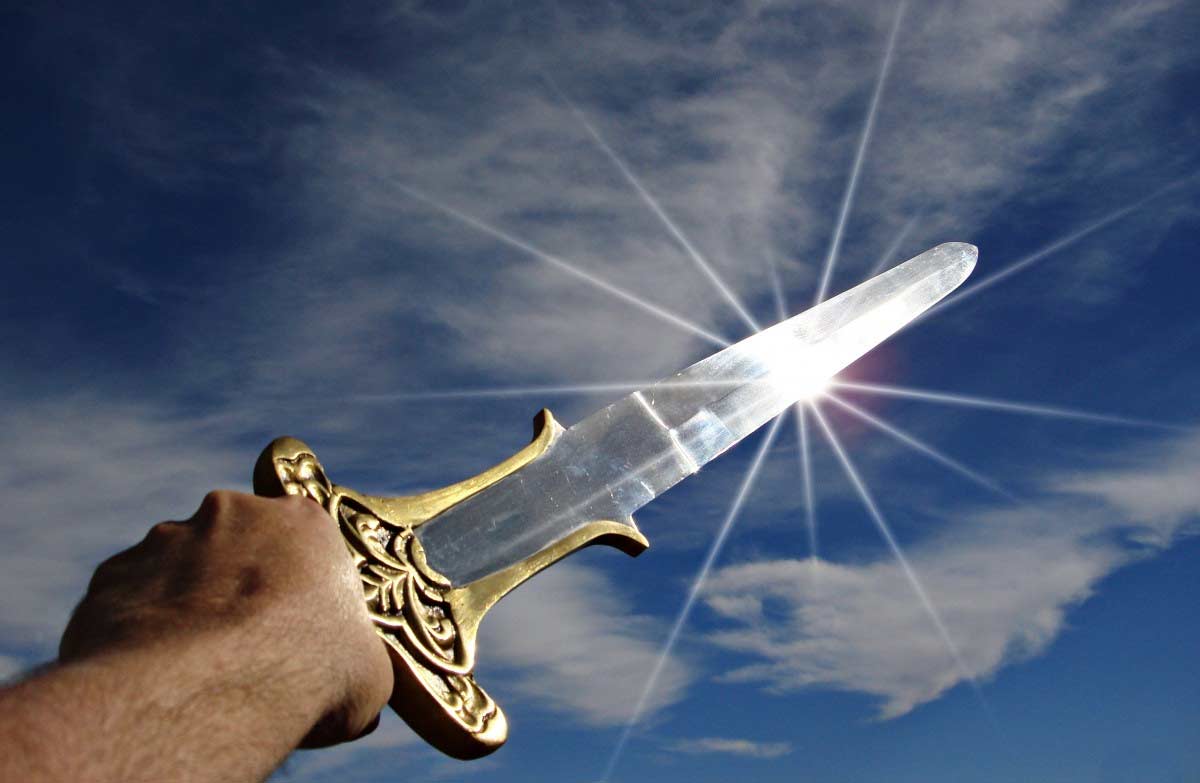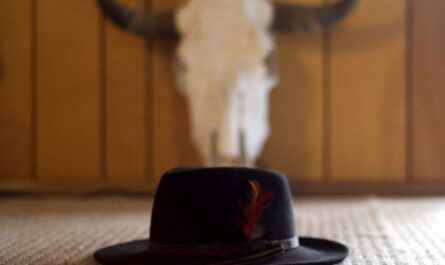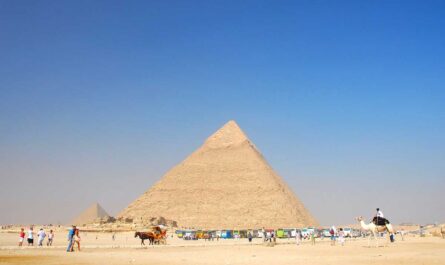Roger Milla once said, “Cameroon is a football country–children are born playing football.” There are a lot of fun facts about Cameroon. This African country is thriving with a lot of prospects, opportunities, success, and achievements. Cameroon, nestled in Central Africa, is a country blessed with diverse landscapes, including lush rainforests, savannas, and the towering peaks of the Cameroon Volcanic Line. Cameroon is a captivating blend of nature, diverse cultures, and a resilient population. Whether exploring the natural wonders, savoring local cuisine, or immersing oneself in the rich cultural tapestry, Cameroon offers a unique and unforgettable experience. Its rich biodiversity encompasses unique flora and fauna, making it a haven for nature enthusiasts. In this article, I am going to share some of the fun facts about Cameroon.
Fun Facts about Cameroon: Past, Present, Future
The native population is equally diverse, comprising over 250 ethnic groups, each with its languages and traditions. The geography ranges from the coastal plains along the Gulf of Guinea to the mountainous regions of the Western Highlands. Predominantly Christian and Muslim, religion plays a significant role in the lives of Cameroonians, influencing customs, festivals, and daily practices. Here are some interesting facts about Cameroon:
1. Agricultural Backbone and Economic Stability
In the mosaic of African nations, Cameroon stands as a testament to self-sufficiency, with a staggering three-quarters of its population intricately tied to the fertile soil they call their own. A remarkable feat unfolds as 90% of the nation’s sustenance emanates from the labor of these hands on their own land. This agrarian foundation, an essential component of Cameroon’s economic tapestry, weaves a narrative of stability that diverges from the tumultuous trajectories witnessed in many of its continental counterparts.
2. Constitutional Evolution: Uniting Diversity
In the annals of political metamorphosis, Cameroon underwent a constitutional evolution in 1972 that reverberated with historical implications. The amalgamation of Eastern and Western Cameroon under a singular authority prompted a nomenclatural shift from the Federal Republic of Cameroon to the United Republic of Cameroon. However, the moniker underwent another transformation in 1984 under the stewardship of President Paul Biya. With a stroke of the pen, Biya proclaimed the birth of the Republic of Cameroon, asserting that the populace, bound by an enduring unity, rendered the term “United” superfluous.
3. Territorial Tussles and Diplomatic Endeavors
The geopolitical canvas of Cameroon bears the indelible brushstrokes of territorial disputes, notably with its sprawling neighbor, Nigeria. The tempestuous undercurrents reached a crescendo in the early 1990s, a period marked by simmering tensions over the resource-rich Bakassi Peninsula. A diplomatic ballet ensued, culminating in the exchange of over 200 prisoners of war under the aegis of the United Nations. The resolution, etched in the corridors of international justice, saw Nigeria ceding the Bakassi Peninsula to Cameroon in 2008. Yet, the echoes of discord persisted, as illustrated by a somber incident in 2010 when assailants clad in Nigerian military regalia claimed five lives at an offshore oil platform on the contentious peninsula.
4. Linguistic Diversity in Cameroon
Cameroon stands as a testament to linguistic diversity, holding the esteemed position of being the ninth most linguistically varied nation across the globe. Remarkably, within the African continent, it proudly claims the second spot after the linguistically rich Nigeria. The intricate tapestry of languages woven into the fabric of Cameroon’s identity showcases a mosaic of cultures, each contributing to the nation’s vibrant heritage. This diversity serves as both a source of pride and a unique challenge, fostering an environment where communication becomes a complex dance of linguistic nuances and expressions.
5. Fulani Cattle Herders’ Livestock Values
The pastoral Fulani community in Cameroon places an immense and profound value on their livestock, weaving a tapestry of cultural significance around their herds. It is not merely a source of sustenance or economic prosperity; rather, it transcends into a symbolic representation of their way of life. These nomadic herders, known for their intimate connection with the land and its resources, go to great lengths to ensure the well-being of their cattle. In a peculiar inversion of priorities, they often prioritize the health and welfare of their livestock over their own needs, forming an intriguing manifestation of their deep-seated cultural ethos.
The significance of social standing among the Fulani is intricately linked with the number of cattle an individual possesses. Cattle ownership becomes a tangible marker of one’s status within the community, reflecting not only economic prowess but also a profound understanding of the intricate web of relationships that define Fulani society. This unique social hierarchy, rooted in the pastoral lifestyle, underscores the role of livestock not just as a means of subsistence but as a dynamic force shaping the very fabric of Fulani social structures.
6. Rites of Passage: Fulani Initiation Ceremony
Embedded within the cultural tapestry of the Fulani of Cameroon is a distinctive initiation ceremony, a rite of passage marking the transition from boyhood to manhood. This ritualistic event is not for the faint of heart, involving a process where young boys are ceremoniously lashed with sticks. The resulting scars serve as a visible testament to their journey into adulthood. This ancient and intriguing tradition is not merely a physical ordeal but a symbolic transformation, where pain becomes a catalyst for growth and maturity.
The ritual of lashing, while seemingly harsh, carries profound cultural significance. It is a visual language, a script etched onto the body, narrating the individual’s story of transition and resilience. In the paradoxical brutality of the ceremony lies a deep sense of community and shared identity, as each scar becomes a badge of honor, connecting the initiated with generations past and those yet to come. This ritualistic dance with pain weaves a complex narrative of tradition and identity that continues to endure among the Fulani.
7. Cyber Perils in Cameroon’s Digital Realm
In the labyrinth of the digital landscape, Cameroon’s internet domain, denoted by the (.cm) extension, stands as a paradoxical testament to both connectivity and vulnerability. In a startling revelation by the cybersecurity behemoth McAfee, Cameroon’s internet space has been crowned as the world’s riskiest domain. A staggering 36.7% of websites domiciled in Cameroon are flagged as potential security threats, creating a virtual minefield for unsuspecting users.
The dangers lurking in this digital frontier manifest in various forms, with cybercriminals deploying sophisticated strategies. Malicious downloads, spyware, adware, and a myriad of unwelcome programs find fertile ground in the .cm domain, preying on unsuspecting users. The precarious landscape of Cameroon’s digital realm raises pressing questions about the intersection of technology, security, and the globalized nature of cyber threats. It serves as a stark reminder that, in the age of connectivity, the digital pathways can be both bridges and battlegrounds, demanding a nuanced understanding of the risks woven into the very fabric of the internet.
8. Unveiling the Colors of Unity: Cameroon’s Flag
Delve into the symbolism embedded within the flag of Cameroon, and a vivid narrative unfolds. The flag is a visual symphony, orchestrated with vertical strips of green, red, and yellow, punctuated by a central yellow star. This emblematic creation transcends mere aesthetics; it encapsulates the essence of national unity and pride. The green strip, an ode to the lush vegetation of the south, intertwines with the yellow, a representation of the sprawling savannas in the north. Meanwhile, the red strip artfully signifies a connection, a symbolic bridge between the contrasting landscapes of the North and the South, standing tall as a testament to national sovereignty. Each color is not merely a hue; it is a brushstroke painting a nuanced portrait of Cameroon’s historical tapestry.
9. Navigating History: Portuguese Pioneers on the Wouri River
Embark on a historical journey to the roots of Cameroon’s discovery, and the narrative unfolds along the meandering waters of the Wouri River. The inaugural encounter with Cameroon by Europeans was etched into the annals of history by intrepid Portuguese navigators in the fateful year of 1472. As their ships sailed upstream, they traced the contours of a land that would later be known for its rich cultural tapestry and natural beauty. The Wouri River, like a silent witness, bore witness to the dawn of European exploration on Cameroon’s shores. This pivotal moment immortalized in the Cameroon World Factbook, marks the genesis of a historical narrative that continues to shape the nation’s identity.
10. Corruption in Cameroon: A Staggering Reality
Transparency International, a global watchdog on corruption, has placed Cameroon under the unenviable spotlight by ranking it among the most corrupt nations on Earth. The disconcerting revelation emerged in 2006 when the organization meticulously evaluated and placed Cameroon at a disheartening 138th out of 163 countries in its Corruption Perception Index. This damning portrayal sheds light on the pervasive nature of corruption within the fabric of the Cameroonian society, highlighting the urgent need for systemic reforms and an unwavering commitment to ethical governance.
11. Cameroon: A Jewel of Natural Splendor
Nestled in the heart of Central Africa, Cameroon emerges as a captivating tapestry of natural beauty and biodiversity. This enchanting nation, adorned with a myriad of wildlife, beckons explorers and nature enthusiasts alike. From the lush rainforests to the sprawling savannahs, Cameroon’s landscape is a testament to its ecological richness. Its allure extends beyond its natural wonders, encompassing a vibrant cultural mosaic that reflects the diversity and resilience of its people.
12. Geographical Tapestry: Cameroon’s Borders Unveiled
Cameroon, the gem of Central Africa, is intricately woven into the continental fabric, sharing borders with Chad to the northeast, the Central African Republic to the east, and Equatorial Guinea, Gabon, and the Republic of the Congo to the south. On its western frontier lies the sprawling expanse of Nigeria, a neighbor with whom Cameroon shares a complex historical and geopolitical relationship. Adding to its geographical diversity, Cameroon boasts a picturesque coastline along the South Atlantic Ocean to the southwest, providing a maritime dimension to its multifaceted identity.
13. Butterfly Biodiversity in Cameroon
Cameroon, a country nestled in Central Africa, boasts a remarkable natural spectacle—its lush landscapes are home to a staggering array of butterflies. Surpassing the astonishing mark of 1,000 species, these delicate winged creatures represent more than a quarter of all butterfly species found across the expansive continent of Africa. The kaleidoscopic palette of colors and intricate patterns displayed by Cameroon’s butterfly population stands as a testament to the biodiversity that graces this ecologically diverse region. This captivating fact unveils a world where nature unfolds its vibrant tapestry, captivating the hearts of enthusiasts and researchers alike.
14. Boko Haram’s Devastating Impact in 2015
In the annals of Cameroon’s recent history, the year 2015 left an indelible mark marred by tragedy and terror. The notorious Islamic extremist group, Boko Haram, wreaked havoc by orchestrating a series of ruthless acts, including suicide bombings and other heinous assaults. Shockingly, the death toll soared to a staggering 1,000 individuals, illustrating the profound and devastating impact this extremist faction had on the lives of countless innocent Cameroonians. The scars of 2015 serve as a painful reminder of the vulnerability faced by communities in the face of such ruthless violence.

15. Escalating Violence: Boko Haram’s Assault in 2016
As the calendar turned to 2016, the menace of Boko Haram continued to cast a dark shadow over Northern Cameroon. In a harrowing span from January 25 to February 10, this extremist group claimed the lives of 50 individuals solely through a chilling method—suicide bombings. The systematic and calculated nature of these attacks further underscored the relentless pursuit of chaos and fear perpetrated by Boko Haram. The events of 2016 unfolded as a somber chapter, revealing the resilience required to confront and overcome the evolving threats posed by extremist ideologies.
16. Abductions and Negotiations: Boko Haram’s Kidnappings
Beyond the grim statistics of violence, the insidious reach of Boko Haram extended to the realm of kidnappings, leaving families shattered and communities in anguish. The northern border of Cameroon became a hotspot for such abductions, with over 30 individuals falling victim to the clutches of this militant group. Among the targeted were not only local citizens but also foreign nationals, adding an international dimension to the crisis. French national Tanguy Moulin-Fournier and his four children, along with other family members, found themselves entangled in the web of terror. In a testament to the complex dynamics at play, many victims were eventually recovered through negotiations orchestrated by the vigilant and proactive efforts of Cameroon’s government. This distressing chapter serves as a stark reminder of the intricate challenges nations face when combating the multifaceted threats posed by extremist groups.
17. Geographical Dimensions
Nestled in the heart of West Africa, the landlocked expanse of Cameroon spans an impressive 184,000 square miles, an area that harmonizes with the diverse landscapes, from the lush rainforests to the expansive savannas. To put this vastness into perspective, it’s a canvas barely larger than the esteemed state of California, or, intriguingly, twice the territorial expanse of the United Kingdom. Within this geographical tapestry, Cameroon weaves a rich cultural fabric, a mosaic flourishing with over 200 distinctive ethnic groups, each contributing to the nation’s captivating diversity.
18. Cultural Tapestry
Cameroon emerges as a kaleidoscope of beliefs and traditions, with a populace significantly influenced by both Christianity and Islam. However, a striking 40% of Cameroonians are rooted in the embrace of traditional religions, a fact that adds a fascinating layer of complexity to the nation’s cultural identity. Delving even deeper into the realm of mysticism, one uncovers peculiar practices, such as the case in the Baba village. In the year 2001, confronted by an alarming meningitis outbreak claiming an average of 10 lives weekly, the village took an unconventional route, resorting to the services of a witch hunter to combat what they believed to be the malevolent workings of witches and wizards.
19. Spiritual Mosaic
Peering into the intricate spiritual landscape, certain Cameroonian tribes offer glimpses into unique practices that defy conventional understanding. Within these tribal enclaves, diviners emerge as custodians of supernatural insights, their abilities believed to transcend the mundane boundaries of existence. In a mesmerizing ritual, spider diviners construct miniature shrines adorned with symbolic cards at the entrance of earth spider burrows. The enthralling interplay unfolds as these seers tempt the spider inhabitants out with carefully laid bait, unraveling the threads of fate through a reading of the cards based on the spider’s enigmatic disruptions. This ancient practice not only serves as a testament to the intricate tapestry of beliefs but also beckons us to peer into the captivating depths of Cameroon’s spiritual lore.
20. The Magnificent Goliath Frog
The goliath frog, an awe-inspiring amphibian, holds the title of the most significant frog species on our planet. This majestic creature, revered for its size and rarity, exclusively inhabits the lush landscapes of Cameroon and Equatorial Guinea. Measuring up to a foot in length and boasting a weight comparable to that of a domestic cat, the goliath frog is a biological wonder that captivates the imagination of those fortunate enough to encounter it in its natural habitat.
21. Cameroon’s Economic Tapestry
Nestled in the heart of Central Africa, Cameroon emerges as the sixth-largest global producer of cocoa beans, with cocoa exports alone yielding a staggering $600 million in revenue during the year 2010. However, the economic tapestry of this nation extends beyond the realms of cocoa, encompassing a diverse array of commodities. Cameroon proudly contributes to the world market as an exporter of timber, petroleum products, coffee, cotton, tea, rubber, peanuts, and bananas. This multifaceted role in global trade positions Cameroon as a pivotal player in the intricate dance of international commerce.
22. The Peculiar Economics of Everyday Life
Behind the grandeur of economic exports and global contributions lies the stark reality of daily life for the average Cameroonian. In this nation, where economic prosperity coexists with socio-economic challenges, the juxtaposition is striking. The meager reality is reflected in the average minimum wage, which stands at a modest $44 per month. A disconcerting statistic emerges when considering that approximately half of Cameroon’s population earns less than $2 per day. This economic dichotomy underscores the complexity and disparities within the social fabric of the nation, where the bounty of exports does not uniformly translate into prosperity for all.
23. Independence Struggles and Formation of Cameroon
Uprisings for independence marked Eastern Cameroon’s trajectory towards autonomy from France, culminating in partial self-government in 1957. The culmination of these efforts transpired on January 1, 1960, when Cameroon finally cast off the shackles of colonial rule, securing its hard-fought independence. The intricate tapestry of this nation’s history also includes the pivotal decision of the Southern British Cameroons, which, in 1961, resoundingly voted to merge with the former French Cameroons, giving birth to the Federal Republic of Cameroon. In a contrasting move, the Northern British Cameroons opted to become an integral part of the newly independent Nigeria, further shaping the complex mosaic of post-colonial Africa.
24. Legal Landscape and Stigma Surrounding Homosexuality
Within the boundaries of Cameroon, the legal framework casts a somber shadow over the LGBTQ+ community. Homosexuality, deemed illegal, subjects individuals engaging in public gay acts to severe penalties ranging from six months to a staggering five years of imprisonment. Adding a layer of complexity to this legal stance is the pervasive belief ingrained in the societal fabric—a notion that homosexuals are cursed or bewitched. This deep-rooted stigma contributes significantly to the lack of acceptance faced by the gay community, creating a challenging environment where legal sanctions and cultural biases intersect.
25. Cameroon’s Economic Paradox: Abundance Amidst Adversity
Nestled within the heart of Africa, Cameroon boasts a plethora of natural resources, political stability, and a strategic geographic location. The culmination of these factors has propelled Cameroon into possessing one of the most diverse and prosperous economies on the continent. This nation stands as the economic linchpin, constituting half of the gross domestic product of all Central African nations. However, the paradox lies in the global context—despite its regional prominence, Cameroon’s economy grapples with relative poverty. This conundrum is orchestrated by issues such as corruption, an unequal distribution of wealth, and the ecological toll of rampant deforestation. In this juxtaposition, the economic narrative of Cameroon is both a tale of promise and a saga of systemic challenges that impede its global ascent.
26. Dja Reserve: A Pristine Haven of Biodiversity
Nestled in the heart of Africa, the Dja Reserve stands as an awe-inspiring testament to the continent’s ecological splendor. Established with UNESCO’s imprimatur in 1950, this World Heritage Site boasts the distinction of being one of Africa’s largest and most meticulously preserved rainforests. Remarkably, a staggering 90% of the reserve remains untouched, serving as a sanctuary for an astonishing array of flora and fauna. In this verdant expanse, a captivating tapestry of life unfolds, harboring no less than 107 mammal species, with five among them classified as threatened. The reserve is a living ode to the delicate balance that exists within the intricate web of nature.
27. Unraveling the Origins of HIV: A Chilling Discovery in Cameroon
In the labyrinth of Cameroon’s southeastern terrain, an ominous discovery unfolded in the early 2000s, forever altering our understanding of a global health crisis. Scientists, in a quest for the origins of the Human Immunodeficiency Virus (HIV), unearthed compelling evidence pointing to chimpanzees in this remote corner of the country. It was here that the virus found its insidious genesis. The unsettling narrative takes us back to 1908 when a fateful encounter occurred—a human, in the pursuit of sustenance, unwittingly acquired the virus while slaughtering a contaminated chimpanzee for bushmeat. This haunting revelation unveils a dark chapter in the intertwined history of humans and the infectious specter that is HIV.
28. Cameroon’s Battle with HIV/AIDS: Statistics Unveiled
The canvas of Cameroon’s public health landscape reveals a sobering tableau marked by the pervasive shadow of HIV/AIDS. Statistics, though stark, provide a critical lens through which the magnitude of the challenge becomes palpable. Approximately 4.77% of the adult population, a staggering 657,500 Cameroonians, grapple with the insidious grip of HIV/AIDS. The year 2014 etched a somber chapter, witnessing the virus claim 34,200 lives within the nation’s borders. These numbers, more than mere statistics, underscore the profound impact of HIV/AIDS on the social fabric, calling for sustained efforts to address and ameliorate the pervasive health crisis. How AI, ChatGPT maximizes earnings of many people in minutes
29. Cameroon Facts: Navigating the Intersection of Conservation and Health
Within the folds of Cameroon’s multifaceted narrative lies the convergence of environmental preservation and public health challenges. The Dja Reserve, a beacon of biodiversity, underscores the imperative of safeguarding natural ecosystems. Simultaneously, the unsettling origins of HIV in the same Cameroonian soil amplify the interconnectedness of environmental conservation and human health. As the nation grapples with these dual challenges, it stands at the crossroads of shaping a sustainable future—one where the treasures of nature coexist harmoniously with the well-being of its people.
More Interesting Articles




